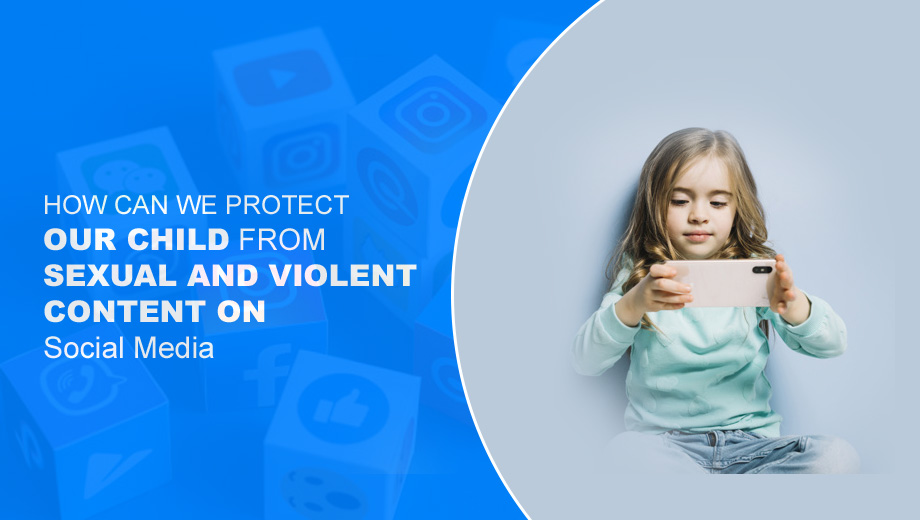Children are killing more time online than before. And those are getting there quickly. Across the world, a kid goes online for the first time every half second. Growing up online can offer limitless chances. Through gaming consoles, smartphones, televisions, and computers, children learn, imagine and develop social networks. When used properly – and available to all – the Internet has the power to broaden horizons and light creativity in the world.
But with the opportunities come severe dangers.
Cyberbullying and different forms of peer-to-peer violence may affect youngsters every time they log in to the instant messaging or social media platforms. When you are browsing the Internet, children can be exposed to violent content and hate speech – including news that incites self-harm and suicide.
Children may be at risk when the tech companies breach the privacy to collect the data for marketing ideas. Child-targeted marketing by apps – and the increased screen time that mostly results in – will compromise with the child’s healthy growth.
There is a piece of evidence from some research that people who got in possession of indecent pseudo images/images or videos/films of children will currently, or in future become, linked directly to child abuse.
Specifically, an individual’s access to a child must be established during the assessment and Section 47 investigation for considering the possibility that this can be actively included in the child abuse, including those within family, within work contexts, or in different settings like voluntary work with kids or different positions of trust.
Any obscene, indecent image that involves a child has, by the very nature, involved a person, who is forming the picture, has been party to hurting the child.
Accessing or Creating Indecent Images
Where there is actual or suspected evidence of anyone creating or accessing indecent pictures of children, this should be shared with Police and Children’s social care with the Referrals Procedure.
Online Grooming
When there are interests about a kid being groomed, shown pornographic material, or communicated by someone inappropriately through Internet or ICT tools such as mobile phone, referrals must be made to Police and the Children’s Social Care with the Referrals Procedure.
The Serious Crime Act (2015) introduced the offense of sexual communication with a child. It applies to any adult who interacts with the child and where the contact is sexual or if that is intended to evoke from the child a communication that is sexual. The adult believes the child to be under 16 years of age. The Act has also amended Sex Offences Act 2003. It is now an offense for any adult to plan to meet anyone under 16, having contacted them on occasion.
All those reports must be taken seriously. Many referrals usually lead to some Strategy Discussion to discover the process of additional investigation, assessment, and enquiry. Any intervention must be constantly under the review, particularly if more evidence comes to light.
Due to this type of abuse and the chance of the damage of evidence, the referrer must discuss the concerns with Police and Children’s Social Care prior to raising the topic to the family. That will allow a mutual decision to inform the family and make sure that child’s welfare is safeguarded.
The extremist material
When there are matters about a child’s exposure to the extremist materials, child’s school will be capable of providing support and advice: all the schools are needed to identify the Prevent Single Point of Contact who has been the lead to safeguard about protecting individuals from involvement and radicalization in terrorism.
Issues
When communicating through the Internet, young people become less cautious and talk regarding things more openly than they might while speaking face to face.
Both female and male adults and young people use the Internet to hurt children. Many people do this by taking, looking at, or/and distributing video images or photographs over the Internet of children in sexual poses, naked or sexually abused.
Young people or children must be provided support to understand when they use digital technology, they must not provide any personal information, especially their address or school, name, mobile phone numbers to people they do not trust or know: it mainly includes social online gaming sites and networking. If anyone has been asked for that data, they must always check with the parent or trusted adult before giving them details. It is also important that they understand why they must take a parent or trusted adult with them if they meet someone face to face whom they have only previously met online.
Responses to the threats need efforts by educators and parents, the authorities of member states, and private companies like ISPs. The responses must include a mix of practical and legal measures respectful of the best of children and of the right to participate in debates on the issues and be heard.
Empowering children
Providing children the tools to defend themselves against the threats over the Internet and grow more aware of the responsibilities is apparently the most efficient way of safeguarding child rights on the Internet. Children’s right to eliminate the traces over the Internet and be forgotten is broadly advocated. That is, of course, essential that children can relieve the consequences of impulsive sharing of private information. Still, it is more important to preventatively act by raising the awareness about long-term consequences and potential risks of sharing private information over the Internet.
Most texts adopted by the Council of Europe and different international organizations in the last decade emphasize the critical need for children’s empowerment by education, that should include digital literacy. Children must also be prepared to understand, identify and then deal with malicious content. Moreover, these must become knowledgeable about human rights, with the right to freedom of expression as well as the right to privacy, the rights of others that they require to respect and be aware not to harm.
Conclusion
As children are more active online at a young age, the probability and possibility that they might look at something inappropriate depend on what they do online. Whether that is some explicit pop-up ad over videos, a free game, showcasing children’s cartoon characters in adult situations, or some forum encouraging self-harm, the innocent search might expose children to content that will make them feel confused and upset.

